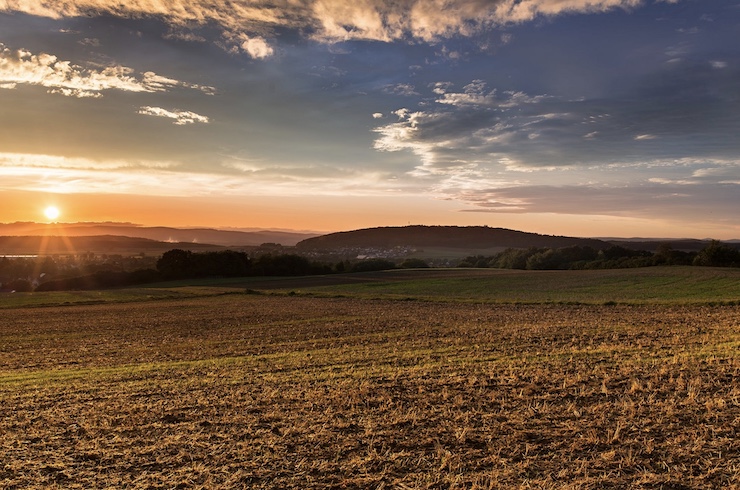
In 1776, the first formal hare coursing club was established in Swaffham, UK, though the sport dates back to at least 180AD. Hare coursing is a hunting sport in which dogs are used to chase and capture a hare. The point is not to capture the hare for food, but to test the speed and agility of the dogs. Originally it was an activity relegated to nobility and landowners. By the 19th century, the sport had gained such popularity that there were more than 150 coursing clubs throughout England changing from a posh pastime to a favorite working class activity. With greyhound racing becoming prominent in the 20th century, Britain’s coursing clubs were reduced to less than 30 by the early 2000’s.
Many animal welfare activists have long spoken out against hare coursing, seeing it as a senseless blood sport. In 2004, the UK Parliament passed a new Hunting Act that banned hare coursing. The act states that using dogs to hunt and capture hares, minks, foxes, or deer would now be illegal. It does not ban the use of dogs to flush out prey to be hunted and shot by a rifle or bow and arrow. However, the passing of the 2004 Hunting Act has not stopped avid fans of the sport from continuing hare coursing.
Authorities believe that illegal hare coursing has become a rampant problem in areas of England that has flat open fields. Over the last 15 years, there have only been 167 cases of hare coursing prosecuted in the UK. Police, prosecutors, and animal activists feel this only represents a fraction of the illegal activity. Hare coursing has been taken over through organized crime channels. The races are filmed and posted online where large sums of money are wagered. Landowners are bullied by mafia-like organizations to turn a blind eye to coursing being held on their properties. One farmer, who was too nervous to release his identity, said that at one point his lands were being illegally used nightly for hare coursing. He was left feeling violated and frightened.
Police have tried to urge farmers and citizens to anonymously report hare coursing activity. But for many, they are too frightened of repercussions from those orchestrating the hunts to report to the police. Others feel that police simply won’t take isolated farmers seriously. To help ease landowners’ fears and crackdown on illegal hare coursing, police are now turning to drones for assistance. A new program led by police from Avon and Somerset will be using drones with thermal cameras to track hare coursing on private and public lands. The hope is that once locals see that police are taking the situation seriously, they will feel comfortable enough to report on their own. Together, with the drones and citizen support, the police hope to take charge of the situation.
Using drones for police activity has become common in much of the United States. Countries throughout Europe are slowly adopting drones for police use as well. However, in both the United States and much of Europe, the use of drones at night for police use has not been welcomed. Civilians often worry that these drones could be used to spy and target them, especially at night when they would be less conspicuous. Also, organizations like the FAA are still determining the safety of drones being flown in limited visibility. Slowly, as drone technology advances, nighttime and limited visibility uses are being permitted.
For police officers looking to take on illegal hare coursing, flying drones at night is mandatory. Most of the illegal hunts happen under the cover of darkness. The criminals assume that no one is going to spot them on an isolated field in darkness. But, they can still hold their hunt, film it, and rake in a large profit. Even if a hunt is being hidden by dark skies, a drone with a thermal camera on it can easily suss out people and dogs in a large field. Tim Bonner, chief executive of the Countryside Alliance, expressed why so few farmers report illegal activity. “It creates a lot of fear, people are very upset and afraid about these people who are trespassing on their land, driving across their crops, killing hares,” he said. He hopes that the drones will persuade farmers to report illegal activity.
Tim also believes that the drones will act as a deterrent for illegal hare coursing. With evidence collected by the drones, there is a chance to appeal for amendments to the laws that would allow for stricter prosecution. Hefty fines could be imposed and animals confiscated. He said that one amendment would be to make it illegal for anyone convicted of hare coursing to even own a dog. The fear of such consequences could prevent some from holding illegal hare coursing events.
The most important aspect is to show the local landowners that authorities understand their reservations about coming forward. With drones, these wary landowners can have a safe way to protect their lands. Charles Mills is a farmer in the York area and the director of the Yorkshire Agricultural Society. He said that his farms have been plighted by illegal hare coursing for over 35 years. Explaining his support of the new drone program he said, “Hare coursing is an awful menace and I know my family is not alone in seeing our farm and our home targeted by criminals whose barbaric acts decimate wildlife. We want to show our support for other farming families who find themselves in similar situations and add our voice to calls for change.” Using modern drones, police hope to eradicate the ancient barbaric sport of hare coursing.
|